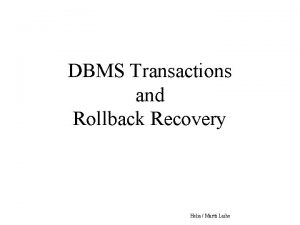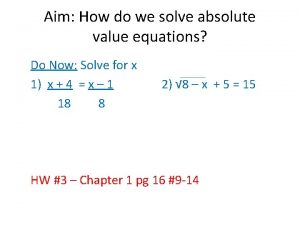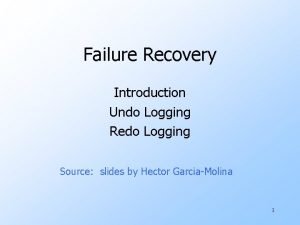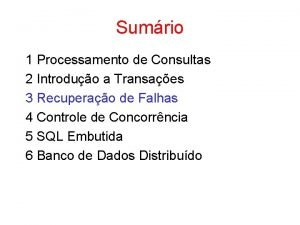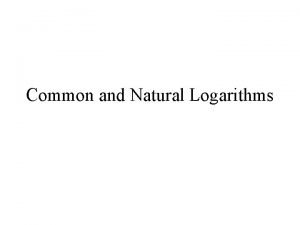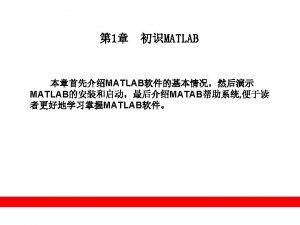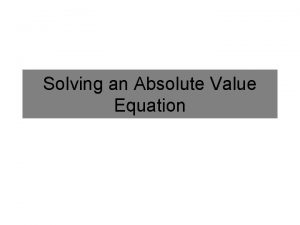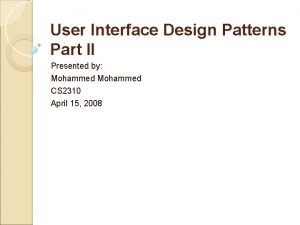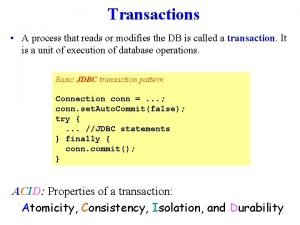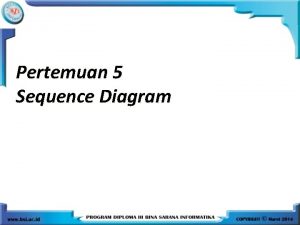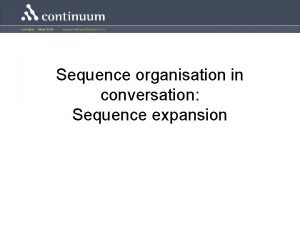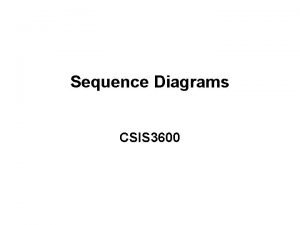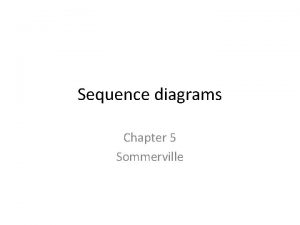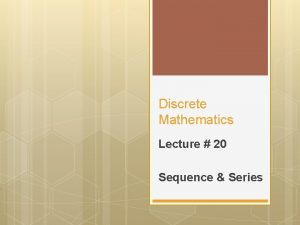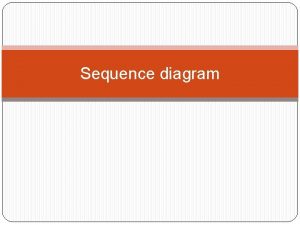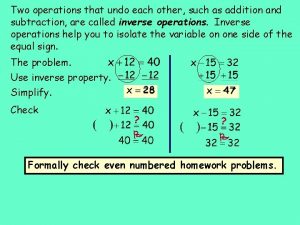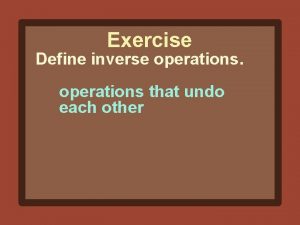To undo a sequence of operations we perform


















- Slides: 18


To ‘undo’ a sequence of operations… … we perform the inverse operations in the reverse order. For example, compare the steps and operations to wrap a present with the steps and operations to unwrap the present: 1. Put present in box 2. Wrap box 3. Put on ribbon 3. Take present out of box 2. Unwrap box 1. Take off ribbon

Inverse Operations… … ‘undo’ or reverse each other’s results. In order to be able to solve equations, you MUST know the mathematical inverse operations:

We can use inverse operations to solve equations… … to do this, we determine the operations that were applied to the variable to build the equation. We then use INVERSE OPERATIONS to isolate the variable by ‘undoing’ these operations.

Here’s an example… to s i b o j ue l Your a v e h tt u o e r u fig of ‘x’. le, p m a x e y, s In this a e s i ‘x’ g n i d n fi da e e n e but w to y g e t a r hen st w ’ x ‘ ine m r e t e d et g s n o i st the que harder! What is the inverse operation? What mathematical operations have been applied to the variable to build this equation? +5 BUILD x SOLVE 8 = x 5 + x 13 -5

Let’s look at a few more examples: x 2 1 = x 3 – x BUILD 9 SOLVE t= t 7 t 3 21 What does the ‘math’ look like when we solve these equations?

Using 2 operations 5 m – 35 = -40

-9 m -7 = 36

Let’s try a harder one

Let’s try a harder one… x 4. 5 BUILD SOLVE d - 3. 2 d 4. 5 d . 4 3 = . 3 -15 ÷ 4. 5 Inverse Operations! + 3. 2 2 3. – d 4. 5 -18 How can you check to see if you are correct?

Let’s try a harder one… x 4. 5 BUILD SOLVE d - 3. 2 d 4. 5 d . 4 3 = . 3 -15 ÷ 4. 5 Inverse Operations! + 3. 2 2 3. – d 4. 5 -18 How can you check to see if you are correct?

http: //search. myway. com/search/video. jhtm l? n=782 afbd 5&p 2=%5 EBYP%5 Exdm 113% 5 ETTAB 02%5 Eus&pg=video&pn=1&ptb=1 61279 E 3 -224 F-4899 -91600 E 576 AE 50 E 9 D&qs=&searchfor=SOLVIN G+USING+MULTIPLE+INVERSE+OPERA TIONS&si=2114 PN 81 w. NMu&ss=sub&st=tab&tpr=sbt&trs= wtt

Here’s a few more… Make sure you ‘build’ the equation first and then use the inverse to solve! Have you noticed a connection between solving equations and BEDMAS?

Working with %. . . Seven percent of a number is 56. 7. n n Write, then solve an equation to determine the number. Check the solution. What does OF mean in math? Choose the method that works best for you, but you MUST show an equation!

Here’s the hardest one yet! +1 3 7 14 28 4 -1 ÷ 2 1) + (x 1 x+ x x= x 7 ÷ 7 x 2 The KEY thing to remember about solving any equation is: Whatever you do to one side of an equation, you must do to the other side to keep the equation balanced!

How about a ‘word problem’? A rectangle has length 3. 7 cm and perimeter 13. 2 cm. n n n Write an equation that can be used to determine the width of the rectangle. Solve the equation. Verify (check) your solution.

Page 271: 5 ab, 6 ac, 7 (discuss), 8 be, 9 ab, 10 bcf, 11 ad, 12 (discuss), 13 abc, 14 abc, 16 ab, 17 ab, 18 acd (be prepared to go over in class!)

What are the rules for solving equations? Build the equation (either on paper) or in your mind. Whatever operation you do to one side, you MUST do to the other side in order to keep the equation balanced! ALWAYS CHECK YOUR WORK!
 Problem 3
Problem 3 Perform operations on functions
Perform operations on functions Redo undo
Redo undo Redo undo
Redo undo How to solve absolute value
How to solve absolute value Undo logging
Undo logging Processamento 2
Processamento 2 Wix gridlines
Wix gridlines Kidpix4 free download
Kidpix4 free download Undo a natural log
Undo a natural log Undo in matlab
Undo in matlab How to undo an exponent
How to undo an exponent How to undo absolute value
How to undo absolute value Startssa
Startssa Undo
Undo Xcopy parameters
Xcopy parameters Wildcards linux
Wildcards linux How to undo log
How to undo log Undo accounting distortions
Undo accounting distortions



